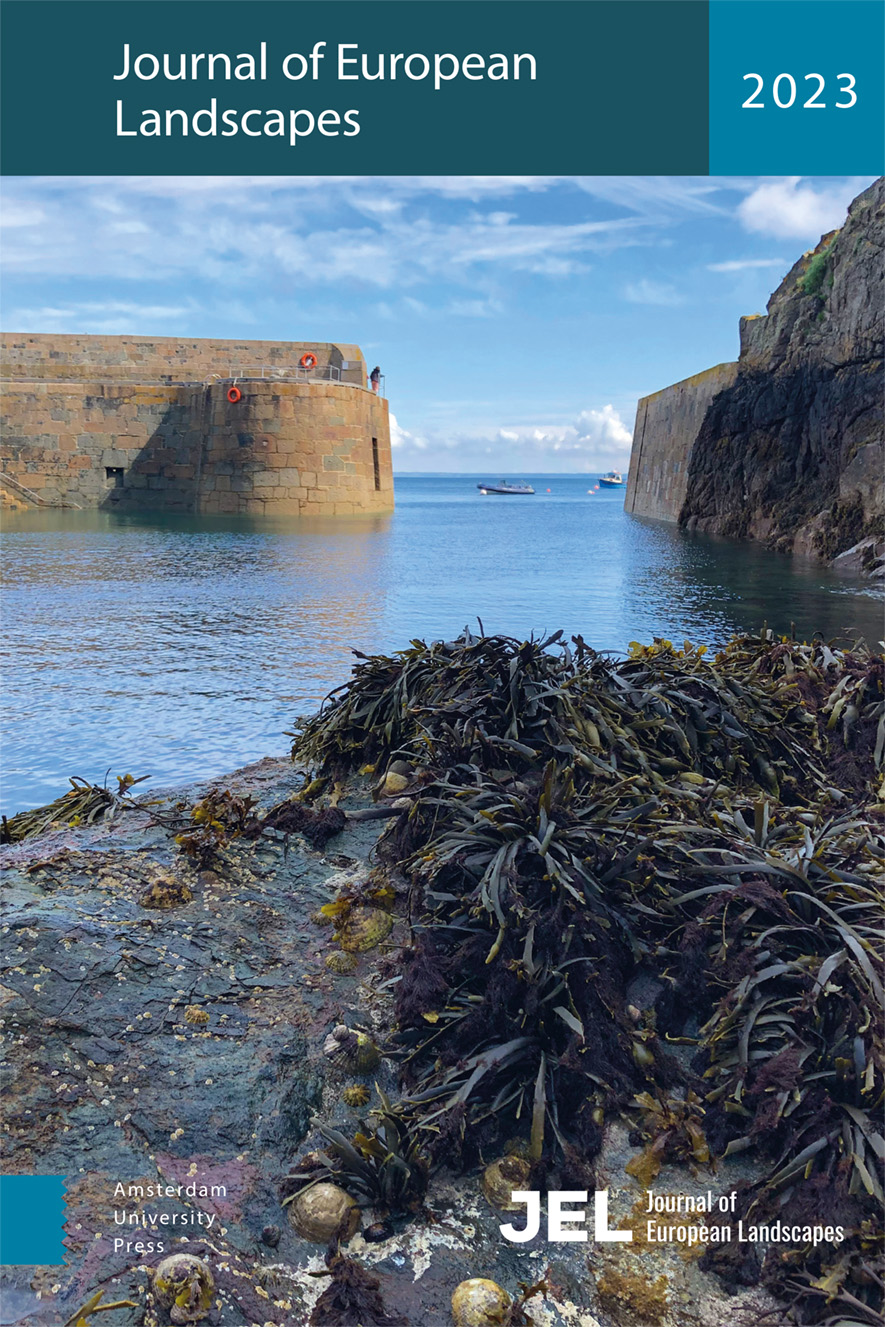- Home
- A-Z Publications
- Journal of European Landscapes
- Previous Issues
- Volume 3, Issue 3, 2022
Journal of European Landscapes - Volume 3, Issue 1, 2022
Volume 3, Issue 1, 2022
-
-
Cisterscapes – Cistercian landscapes connecting Europe
More LessAbstract The LEADER Transnational Cooperation Project „Cisterscapes – Cistercian landscapes connecting Europe“ takes places from 2019–2022. The article gives an overview of the project, the project partners, aims and results and where to follow them.
-
-
-
Educational Strategies in Cultural Landscapes. Are we complying with the Faro Convention?
More LessAbstract The Faro Convention1 underlined the importance of educational initiatives related to heritage. This paper focuses on the educational dimension of landscape, as a means to better facilitate its social acceptance and hence its inclusion in planning and management processes. The relation between landscape education and social perception, through a few European examples will be analysed to ascertain whether th Read More
-
-
-
Corridor Talk: Conservation Humanities and the Future of Europe’s National Parks
More LessAbstract Corridor Talk: Conservation Humanities and the Future of Europe’s National Parks is a DFG-AHRC funded project at the Rachel Carson Center for Environment and Society at LMU Munich (Germany), and the University of Leeds (UK). The project focuses on three European transboundary national park areas: the Pyrenees, the Bavarian Forest and Šumava, and the Wadden Sea Biosphere Reserve. It uses co Read More
-
-
-
Harbourview: An Irish-Welsh networking initiative
More LessAuthors: Elizabeth Shotton & Oriel PrizemanAbstract Historic harbours, as infrastructural elements, are neither buildings nor monuments thus typically fall between the remits of heritage designation. Yet they are critical to reading the human occupation of islands historically. Inevitably these routes and points of embarkation and disembarkation were pathways not just for goods, but also for knowledge, beliefs, and broader cultural understanding. The rising sea lev Read More
-
-
-
From a local to global sense of place
More LessAuthors: Sophie C. van Riel & Wilhelmina C. VogelAbstract In times of globalisation and increased connectivity the construction of sense of place is subject to change. In this article the impact of increased connectivity on the development of sense of place is researched through literature studies and field research. The field research covered 18 towns and cities in Europe, all situated along the Rhine, Main and Danube. The largest spatial scale that is addressed in this article is Read More
-
-
-
The experience of common European heritage: A critical discourse analysis of tourism practices at Cultural Routes of the Council of Europe
More LessAbstract Routes and networks with a heritage theme can be seen as alternative ways of approaching heritage, as they situate heritage sites in larger geographical and cultural contexts. The development of routes and networks can benefit places and stakeholders by attracting tourists, but in practice most routes and networks do not use their potential to become an experience-based form of tourism. In this article, seven C Read More
-
-
-
A refined literature review to promote sustainable development through integrated frameworks in the European landscape
More LessAbstract Humans and human communities influence—and are influenced by—the landscapes or ecosystems of which they are a part. The contemporary landscape which much of the world’s population inhabits is a complex matrix of interrelated human and natural systems. The European Landscape Convention’s comprehensive definition recognizes the importance of landscape but is deficient in classification fra Read More
-
Most Read This Month
Article
content/journals/24521051
Journal
10
5
false
en


